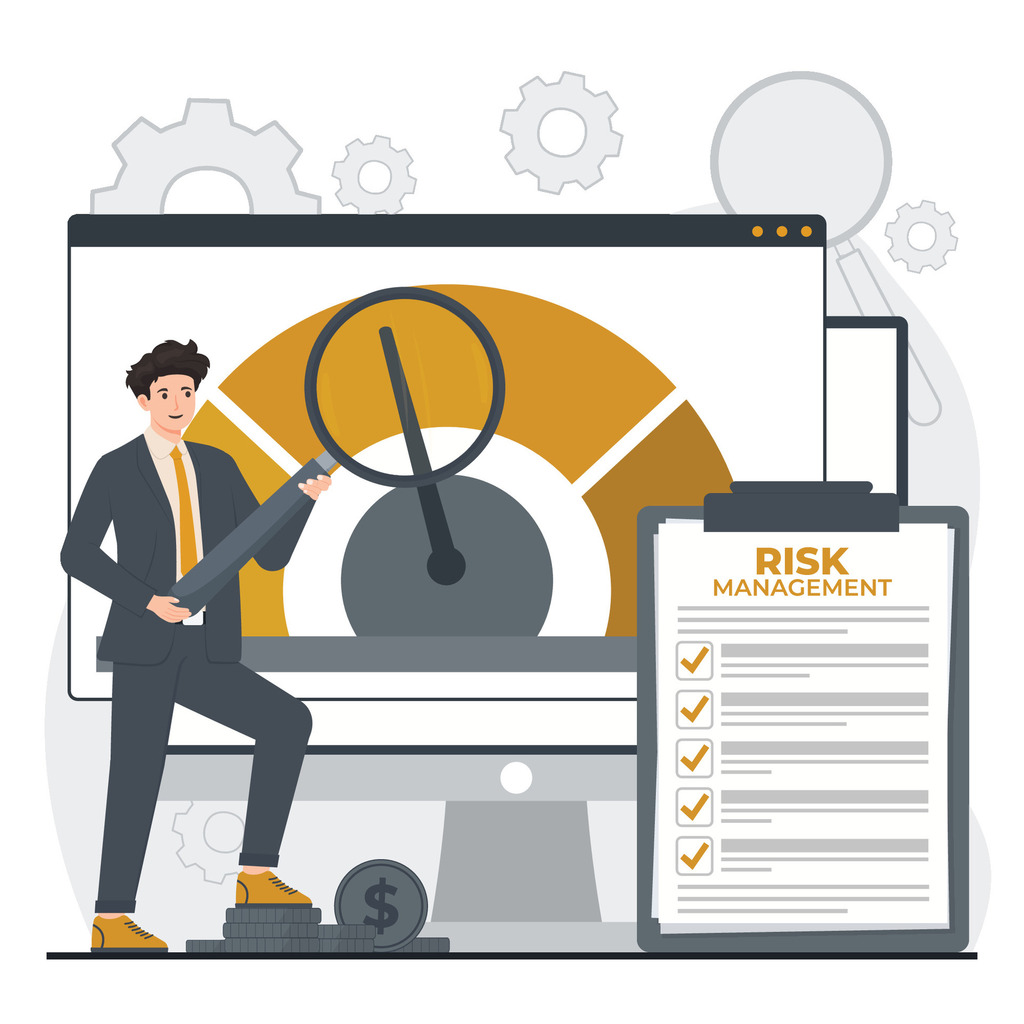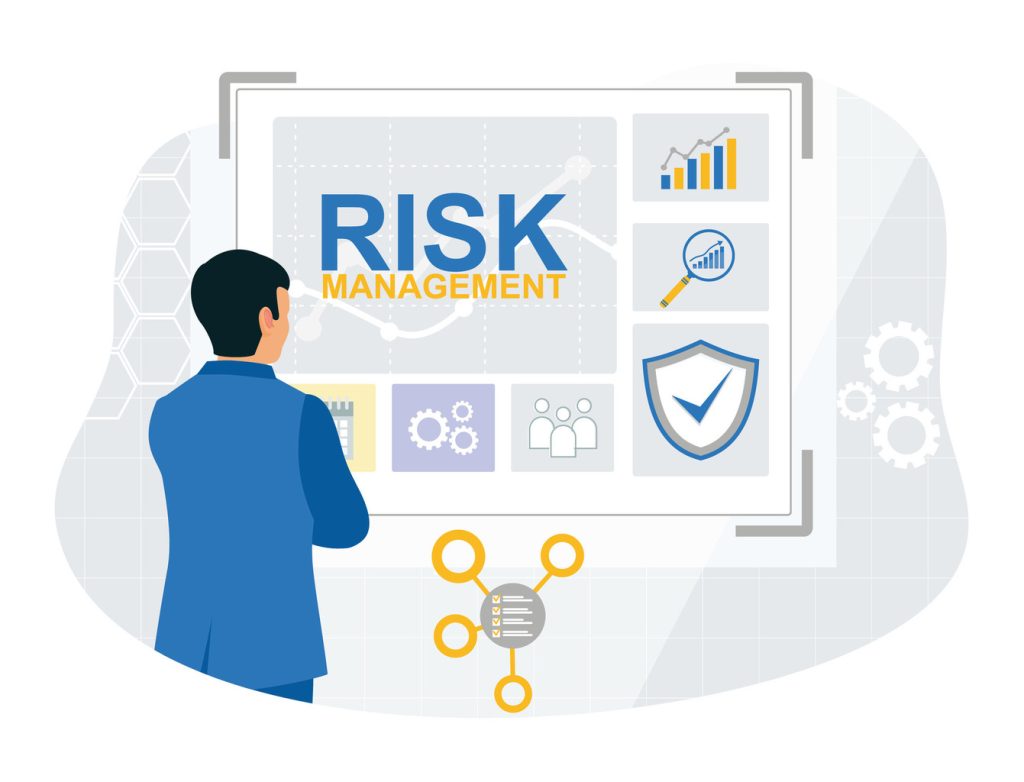Effective Risk Management: Best Practices Guide for Businesses

Every business faces challenges that can disrupt operations or hinder growth, making Risk Management an essential practice. From cyberattacks to supply chain bottlenecks, modern organizations need structured approaches to navigate uncertainty. This guide explores proven methods to identify, analyze, and address potential threats while maintaining strategic agility.
Companies that prioritize systematic threat mitigation often outperform competitors. They achieve faster recovery times, lower incident costs, and stronger compliance with regulations. These organizations also gain stakeholder trust by demonstrating preparedness for both predictable and unexpected scenarios.
Forward-thinking leaders now view threat analysis as a growth accelerator rather than just a protective measure. By integrating these practices into daily operations, businesses can uncover opportunities hidden within volatile markets. This balance between caution and innovation drives sustainable success in today’s fast-paced economy.
Key Takeaways
- Structured frameworks reduce operational disruptions and financial losses
- Technology integration improves threat detection and response efficiency
- Proactive planning turns market volatility into competitive advantages
- Mature programs correlate with higher customer satisfaction and investor confidence
- Continuous improvement processes adapt strategies to evolving challenges
Understanding the Foundations of Risk Management
Modern enterprises operate in environments where unpredictability drives decision-making. Effective frameworks help companies balance opportunity exploration with threat mitigation. This approach transforms uncertainty into structured pathways for growth.
Definition and Importance
Systematic threat analysis enables organizations to protect assets while pursuing strategic goals. Legal challenges like compliance gaps or contract disputes can drain resources. Environmental factors—from hurricanes to carbon regulations—demand contingency planning. Companies that map these variables build adaptable infrastructures ready for sudden market shifts.
“The best strategies turn potential disasters into controlled experiments,” notes a Fortune 500 operations director.
The Impact of Risks on Business Operations
Unaddressed threats ripple through every department. A cybersecurity breach halts production lines. Supplier failures delay shipments. Consumer trends shift overnight. Each scenario impacts revenue and stakeholder trust.
Proactive organizations use enterprise-level analysis to spot opportunities. Expanding into emerging markets or launching innovative products requires calculated moves. These decisions balance potential gains against possible setbacks.
- Operational disruptions reduce customer satisfaction
- Regulatory fines diminish profit margins
- Strategic pivots require real-time data analysis
Key Components of an Effective Risk Management Process

Organizations seeking sustainable growth rely on structured frameworks to navigate operational challenges. A robust approach combines systematic evaluation with data-driven decision-making, transforming uncertainty into actionable insights.
Identifying and Analyzing Risks
Comprehensive identification forms the backbone of any successful strategy. Teams assess internal workflows, market trends, and regulatory landscapes using tools like employee surveys and industry reports. Historical data reveals patterns that manual reviews might miss.
Analysis goes beyond surface-level observations. It examines how supply chain delays affect production timelines or how cybersecurity gaps impact customer trust. One logistics manager notes: “Mapping interdependencies helped us reduce warehouse downtime by 37% last quarter.”
Prioritizing Risks for Strategic Action
Not all threats demand equal attention. Leaders use scoring systems to rank issues based on three factors:
| Priority Criteria | Operational Impact | Strategic Alignment |
|---|---|---|
| High | Disrupts core functions | Affects annual revenue goals |
| Medium | Delays secondary projects | Impacts 2-year growth plans |
| Low | Minor workflow adjustments | No direct strategic consequence |
This method ensures resources address critical vulnerabilities first. Quantitative metrics like financial exposure combine with qualitative assessments of brand reputation for balanced evaluations.
Steps in the Risk Management Process
Organizations navigating today’s complex markets require clear roadmaps to address potential threats. A five-phase approach helps teams systematically uncover vulnerabilities and allocate resources effectively. This methodology transforms uncertainty into structured action plans.
Risk Identification and Risk Analysis
To begin with, comprehensive identification starts with collaborative workshops and data reviews. In addition, teams examine financial records, supplier contracts, and market trends to spot hidden patterns. For example, one cybersecurity director explains: “Cross-departmental input reveals blind spots spreadsheets can’t capture.”
Analysis measures each threat’s operational reach and financial impact. Tools like heat maps visualize how delays in raw material shipments might affect quarterly revenue. This phase separates minor hiccups from critical workflow blockers.
Treatment and Monitoring of Risks
Prioritized threats receive tailored responses—from contract renegotiations to backup vendor partnerships. A retail chain recently reduced inventory losses by 42% through supplier diversification. Digital platforms now enable continuous tracking of threat landscapes.
Notably, automated dashboards flag emerging issues like shifting compliance standards or unusual network activity. Meanwhile, teams review mitigation efforts monthly, adjusting strategies as market conditions evolve. As a result, this cyclical approach turns reactive firefighting into proactive growth planning.
Utilizing Digital Systems for Risk Management

Modern organizations face accelerating operational complexity that demands smarter solutions. Digital tools transform how companies handle potential threats, replacing outdated manual processes with precision and speed.
Benefits of Automated Risk Registering
Automated systems eliminate paperwork bottlenecks by capturing threat data directly from operational workflows. Real-time dashboards show live updates, ensuring stakeholders access current information without email requests. A logistics firm recently cut reporting time by 63% using this approach.
Technology enables continuous monitoring across multiple threat vectors simultaneously. Cloud-based platforms alert teams about emerging issues like supplier delays or compliance gaps. “Our system flagged a cybersecurity anomaly before human analysts noticed,” shares a financial services IT director.
- Centralized data repositories reduce duplicate entries and version control errors
- AI-powered analytics predict supply chain disruptions with 89% accuracy in recent trials
- Mobile access supports decision-making for remote teams during critical incidents
Firstly, integration with existing ERP and CRM systems creates unified intelligence networks. Consequently, these connections help organizations assess threats in context with sales pipelines and inventory levels. Moreover, automated reporting features generate compliance documentation during audits, saving hundreds of work hours annually.
Risk Assessment Strategies and Best Practices
Choosing the right evaluation framework separates reactive organizations from proactive market leaders. Businesses now balance measurable financial exposures with intangible operational threats, requiring adaptable assessment strategies.
Qualitative Versus Quantitative Approaches
Primarily, qualitative assessment uses descriptive scales to evaluate issues like regulatory shifts or brand reputation challenges. Subsequently, expert teams assign severity ratings through workshops, prioritizing threats that resist numerical measurement. For instance, climate change impacts often require scenario-based analysis rather than pure data models.
“Numbers can’t capture stakeholder anxieties about sustainability practices,” observes a Fortune 500 ESG director. “That’s where qualitative insights bridge the gap.”
Financial institutions favor quantitative methods, applying statistical models to calculate probable losses. Algorithms process historical data to predict market fluctuations or credit defaults. This approach delivers concrete metrics for insurance needs and capital reserves.
Leading organizations combine both strategies:
- Screen emerging threats through qualitative filters
- Apply quantitative modeling to high-priority items
- Update criteria quarterly using market intelligence
Standardized evaluation frameworks maintain consistency across departments. A retail chain recently improved supplier evaluations by 31% using unified severity scales. Regular updates ensure assessments reflect current compliance requirements and operational realities.
Integrating Risk Management within Business Strategy

Strategic alignment transforms potential threats into stepping stones for organizational success. Forward-thinking companies merge protective protocols with their strategic vision to drive results. This integration ensures every decision considers both growth potential and operational safeguards.
Aligning Risks with Organizational Goals
Mature strategies treat protective measures as growth enablers rather than constraints. A 2023 Deloitte study found companies aligning safeguards with objectives achieve 28% faster project completion rates. “Protection frameworks become accelerators when tied to revenue targets,” states a tech startup CFO.
Effective integration requires three core elements:
| Integration Approach | Strategic Focus | Outcome |
|---|---|---|
| Goal-Linked Protocols | Connects safeguards to KPIs | 42% fewer project delays |
| Resource Pairing | Aligns budgets with threat profiles | 31% cost reduction |
| Stakeholder Mapping | Links teams to specific objectives | 67% faster approvals |
Organizations using these methods redirect resources from low-impact activities to high-value initiatives. Regular strategy reviews maintain alignment as markets shift. Cross-functional workshops help teams identify redundant processes draining budgets.
“Integration turns protective planning into innovation fuel—we’ve seen R&D productivity jump 19% since implementation.”
Digital dashboards now track strategy-safeguard alignment in real time. These tools flag misaligned projects before launch, preserving capital for initiatives matching corporate priorities. Companies report 54% higher stakeholder confidence when demonstrating this cohesion during investor briefings.
Modern Risk Management Strategies for Today’s Challenges

Contemporary organizations confront evolving challenges that demand adaptive approaches. From supply chain breakdowns to AI-powered cyberattacks, businesses require integrated solutions that address multiple threat vectors simultaneously.
Cybersecurity, Compliance, and Operational Solutions
Digital defense systems now combine automated monitoring with human expertise. Real-time threat detection tools scan networks while employee training programs reduce phishing vulnerabilities. A 2024 IBM report showed companies using layered security protocols reduced breach costs by 58%.
| Threat Type | Key Components | Business Impact |
|---|---|---|
| Cybersecurity | Encryption standards, access controls | Prevents data loss and regulatory fines |
| Compliance | Automated audits, policy updates | Avoids penalties and preserves partnerships |
| Operations | Supplier diversification, IoT monitoring | Maintains production continuity |
Recent industry studies show 73% of enterprises updated their protective protocols after 2022’s geopolitical shifts. “Our compliance dashboard flags regulatory changes within hours,” shares a healthcare technology executive. Cloud-based systems now track emerging sustainability requirements across 140+ countries.
Advanced analytics transform raw data into actionable insights. Machine learning models predict equipment failures weeks before breakdowns occur. This proactive approach helps companies allocate resources effectively while maintaining customer service levels during disruptions.
Effective Risk Management in the United States
American businesses thrive when combining regulatory awareness with technological innovation. Firms adopting dynamic safeguards navigate SEC updates and California privacy laws while maintaining operational momentum. Cloud-based compliance tools now auto-update policies across 50 states, reducing legal exposure.
Cybersecurity remains critical as 63% of US companies faced data breaches last year. Proactive organizations use AI-driven threat detection paired with employee training programs. This dual approach slashes incident response times by 41% on average, according to 2024 industry reports.
Supply chain resilience separates market leaders from competitors. Top performers map tier-2 suppliers and monitor geopolitical shifts through real-time dashboards. “Our automated alerts prevented $2.8M in potential losses during port strikes,” shares a Midwest manufacturing executive.
Forward-thinking enterprises integrate protective protocols into growth strategies. They balance FDIC requirements with fintech partnerships, turning compliance into customer trust builders. This alignment drives 23% higher investor retention rates compared to reactive peers.
Continuous improvement remains essential. Quarterly strategy reviews and stakeholder feedback loops keep safeguards relevant. Companies embracing this mindset report 19% faster recovery from disruptions while uncovering new revenue streams in regulated markets.

